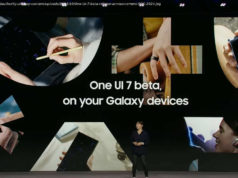An inexpensive PC can be a powerful (and, here in 2020, essential) educational tool for your child. Here’s what to consider when shopping for a kid-friendly laptop, as well as our top models to buy. Most are under $500, and all have been tested in depth.
The question of whether (and when) to buy your son or daughter a smartphone is fraught with concerns over responsibility, online safety, and much more. The same goes for buying a laptop, except for one very important difference: Many elementary and middle schools consider them essential educational tools, and equip classrooms with machines for their students. Other schools require parents to purchase laptops, offering a selection of recommended models. Their effectiveness at improving learning is up for debate, but the upshot is that your kid might need to use a laptop at school or for school whether you like it or not, especially in these uncertain times that may mandate distance learning. Regardless, they will almost certainly want to use it at home, too, both for fun (messaging their friends, watching videos, playing Fortnite) and homework (looking up information, typing book reports). Kids being kids, the list of factors to consider doesn’t end there. Don’t forget about parental controls, durable plastic, and water-resistant keyboards. At least you won’t have to worry about the cost. Buying a kid-friendly laptop need not break the bank—all of our recommended models cost less than $700, and most are well under $500—and the even better news is that just because they’re inexpensive doesn’t mean that they are necessarily slow or poorly made. Our focus here is on younger kids. If your child is at the university level, check out our roundup of the best laptops for college students. And you’ll find even more choices in our overall roundup of the best budget laptops. Also check our top picks for the best Chromebooks for kids for more on Chrome OS concerns and education aspects, especially for the lower grades. The Best Laptop Deals for Kids This Week* Acer Aspire 5 AMD Ryzen 3 3200U 15.6-Inch 1080p Laptop $349.99 (List Price $439.99; Save $90) HP AMD Athlon 14-Inch Laptop With 128GB SSD — $249.99 (List Price $329.99; Save $80) Asus VivoBook 15 Ryzen 5 15.6-Inch Laptop With 256GB SSD — $479.99 (List Price $549.99; Save $70) Lenovo IdeaPad 3 Intel i3 15-Inch Touch Laptop With 256GB SSD — $379.99 (List Price $429.99; Save $50) *Deals are selected by our partner, TechBargains Which Operating System Is Best? Before you begin to evaluate features, you’ll start with the essential question that has plagued PC shoppers for decades: Which operating system should I choose? This is not the Mac vs. Windows debate of old. New Apple laptops aren’t available for less than $500—not even close. The least-expensive Mac laptop, the MacBook Air, starts at $999 and is still overkill for an elementary- or middle-school student. If you’re an Apple fan and want to raise your son or daughter to be one too, you’re best off giving them a hand-me-down and buying a new MacBook or MacBook Pro for yourself. Reused Macs aside, most parents will choose between Windows 10 and Chrome OS, the operating system from Google. In addition to running web apps within the Chrome browser, Chrome OS can also run apps from the Google Play store designed for Android smartphones and tablets, including Microsoft Office. If you’ve decided against buying a smartphone for your kids but they talk your ear off about wanting to play mobile games, buying a Chromebook might be a good compromise. Windows 10 has also become more useful as an operating system for kid-oriented laptops thanks to the Windows 10 S Mode, which is aimed at the education market and, among other security enhancements, prevents apps from being installed unless they’re available on the Microsoft Store. This means you’ve got the ability to block games and apps based on their content ratings (something you can also do with Google Play apps). When your son or daughter gets older and more responsible, you can easily upgrade to the full version of Windows 10 to remove these limitations. If your child’s school has specific software that runs only on Windows, your operating system choice will be decided for you. If not, you’ll want to take a close look at Chrome OS, since a few Chromebooks include decidedly kid-friendly features (such as easy-grip coatings, or display lids that double as whiteboards). Again, check out the Chromebooks-for-kids story referenced earlier for more on the specifics around this OS. Built for Backpacks: Assessing Ruggedness Unique features like these are what transforms an ordinary cheap laptop into a school-friendly machine that kids won’t outgrow or destroy in a few months. Arguably the most important is how rugged the case is. A few Chromebooks and inexpensive Windows laptops have spill-resistant keyboards, which means that they should survive splashing with an ounce or so of water unscathed. It’s much rarer to find entire laptops that are waterproof; the ones that are (models like Panasonic’s Toughbook line or Dell’s Latitude Rugged Extremes) typically cost several thousand dollars and aren’t geared toward kids at all, but rather workers in outdoors or shop-floor professions. Likewise, it’s relatively easy to find reinforced lids or cases made of rubber to help absorb drops from a few feet, but you just won’t find fully ruggedized machines anywhere close to this price range. Portability is another key concern, especially for middle- and high-schoolers who walk to school with backpacks laden with heavy textbooks. Most laptops in this category with screen sizes from 11 inches to 13 inches weigh about 2.5 pounds. Go above 3 pounds, and you’re putting a real burden on your child’s shoulders. Battery life is important, too, but it’s no longer the limiting factor that rendered the laptops of a decade ago useless if they spent more than a few hours away from a power outlet.






